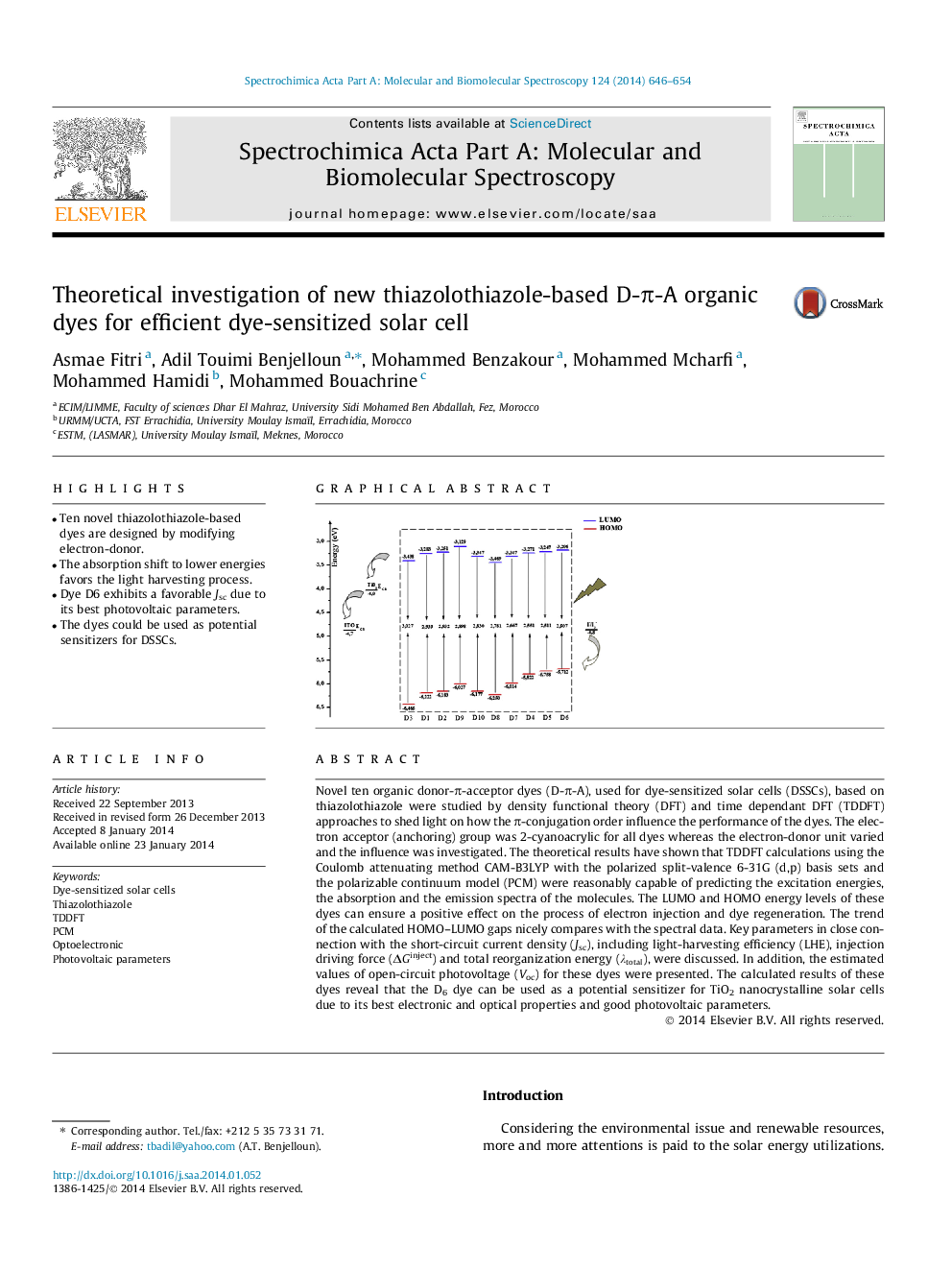| کد مقاله | کد نشریه | سال انتشار | مقاله انگلیسی | نسخه تمام متن |
|---|---|---|---|---|
| 1234336 | 1495244 | 2014 | 9 صفحه PDF | دانلود رایگان |

• Ten novel thiazolothiazole-based dyes are designed by modifying electron-donor.
• The absorption shift to lower energies favors the light harvesting process.
• Dye D6 exhibits a favorable Jsc due to its best photovoltaic parameters.
• The dyes could be used as potential sensitizers for DSSCs.
Novel ten organic donor-π-acceptor dyes (D-π-A), used for dye-sensitized solar cells (DSSCs), based on thiazolothiazole were studied by density functional theory (DFT) and time dependant DFT (TDDFT) approaches to shed light on how the π-conjugation order influence the performance of the dyes. The electron acceptor (anchoring) group was 2-cyanoacrylic for all dyes whereas the electron-donor unit varied and the influence was investigated. The theoretical results have shown that TDDFT calculations using the Coulomb attenuating method CAM-B3LYP with the polarized split-valence 6-31G (d,p) basis sets and the polarizable continuum model (PCM) were reasonably capable of predicting the excitation energies, the absorption and the emission spectra of the molecules. The LUMO and HOMO energy levels of these dyes can ensure a positive effect on the process of electron injection and dye regeneration. The trend of the calculated HOMO–LUMO gaps nicely compares with the spectral data. Key parameters in close connection with the short-circuit current density (Jsc), including light-harvesting efficiency (LHE), injection driving force (ΔGinject) and total reorganization energy (λtotalλtotal), were discussed. In addition, the estimated values of open-circuit photovoltage (Voc) for these dyes were presented. The calculated results of these dyes reveal that the D6 dye can be used as a potential sensitizer for TiO2 nanocrystalline solar cells due to its best electronic and optical properties and good photovoltaic parameters.
Figure optionsDownload as PowerPoint slide
Journal: Spectrochimica Acta Part A: Molecular and Biomolecular Spectroscopy - Volume 124, 24 April 2014, Pages 646–654